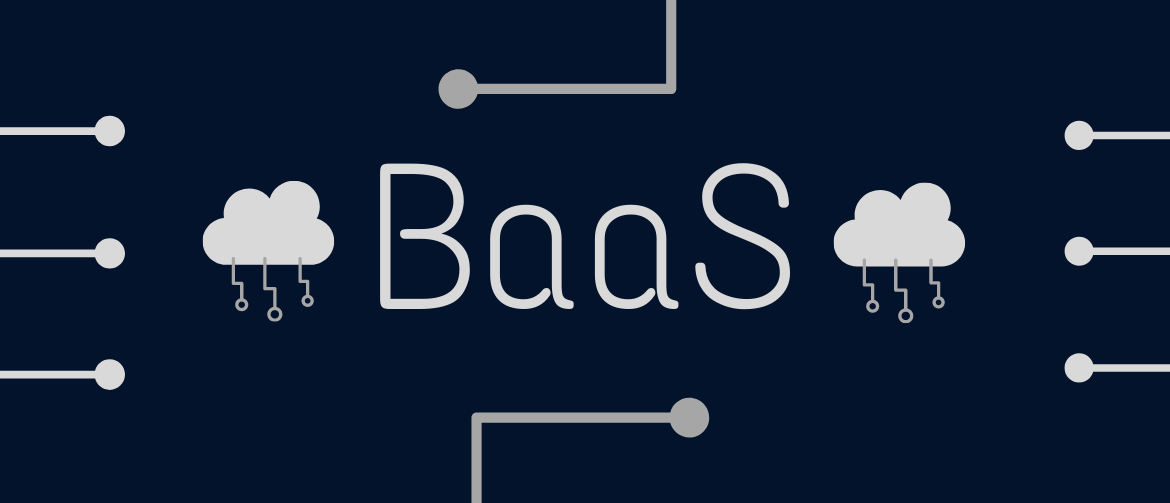Backend as a Service – What is a BaaS?
Backend as a Service (BaaS) allows developers to focus on the frontend of their applications and leverage backend services without building or maintaining them. BaaS and serverless computing share some similarities, and many providers offer both, but the two models have several differences.
What is a Backend as a Service?
Backend as a Service (BaaS) is a third-party service that lets you develop an app or a website without bothering with its backend. When using this service, you leave time-consuming and expensive backend tasks to a BaaS provider while channeling your efforts into the frontend. BaaS grants you access to a bundled infrastructure with tailor-made APIs and SDKs behind it. It saves you the pain of powering your development, managing user permissions, setting up cloud storage, and configuring user authentication. Your BaaS vendor takes care of this for you. In the mobile landscape, BaaS can take the shape of a mobile backend as a service (mBaaS). Unlike traditional BaaS, this service is focused on managing the backend of mobile apps, but not web projects. Similar to it, mobile BaaS entails API-first development without having to even think about your app’s server-side tasks. Get ready to heave a sigh of relief.

How does Backend as a Service work?
Most tools in the BaaS market run in the cloud, and they work best with companies that are doing the same. It’s common for vendors to build BaaS products in layers.
- Foundation: Servers appear here. Some run your programs, and others back up your information.
- Applications: BaaS products handle requests (such as logins) at this layer.
- Connections: The application servers access the internet at this layer.
An API and SDK work as a bridge between what happens at the frontend (which users see) and the backend (which handles security and data). If your app is incredibly successful, you may draw in plenty of users in a short timeframe. All of their requests and logins can drain your server’s capacity. In a perfect world, your BaaS tool would scale up to accept the traffic. Unfortunately, some tools don’t work this way. If you’re facing more traffic, you’d need to contact your BaaS vendor and ask for help.
Audience of BaaS
Backend as a Service is being used for both indie developers and enterprises. In each case, individuals are seeking out BaaS to ease mobile application development complexities. BaaS can also solve the cross-platform development problem and learn the required skills for backend processing.
If a developer is experienced in JavaScript only on the client-side and wants to develop applications, then he can get help from BaaS. Developers can easily utilize BaaS solutions to develop applications without investing any effort in learning backend development.
Benefits of BaaS
Over the coming years, the API-based BaaS approach will provide third-party services as a backend function, with users building platform-specific apps on top of a reusable base. This API base will house repeatable functions, such as push notifications, integration with social networks, file storage and sharing, location services, messaging and chat, user management, business logic, and usage analysis. These elements will be available to all apps built on top of the backend, regardless of what app platform the end-user will consume, such as iOS or Android. The reusable services provided by BaaS contribute several advantages over traditional front-end development.
A reusable and repeatable backend brings many benefits, such as:
- Stops unnecessary stack development: Instead of many developers being forced to recreate a stack for each mobile app they develop, a BaaS service can provide for much of their underlying processing needs. Their main issue would then be connecting to an API, instead of spending hours developing customized stacks that then have to be re-created, changed, and reassembled to fit the needs of each different app platform. Developers can build just what they need on top of existing structures, instead of starting from scratch each time.
- Allows for more accessibility: If each app has the same underlying base then BaaS has the potential to easily link apps across platforms. This has many benefits, from easier data sharing to better accessibility for cloud storage, a quicker spin-up time, and an overall better user experience.
- Provides diverse outcomes from one model: Think of BaaS as a “starter home.” Each user starts off with the same basic elements and continues to add to those elements to create their own customized “home.” However, because the base elements of the house are all the same, other users have the potential to more easily understand and even interact with or fix the “house,” creating a unified backend that has a better and stronger user base.

Advantages of Backend as a Service
- The main advantage of the vendor solution is the simple configuration of the backend. In just a few clicks, you can create, for example, templates for tables. Database connections are also taken care of.
- Another advantage is the backend maintenance which is the responsibility of the service provider.
- BaaS solutions can be cloud-based which means infrastructures can be managed independent of your location or server location.
- At the same time, designated backend developers are no longer needed, which renders the often time-consuming communication between frontend and backend a thing of the past, saving both time and money.
- Since BaaS models are predominantly pay-as-you-use, users only pay for the contingents they require. Providers tend to offer different package levels (similar to hosting packages) so that users get an overview of costs in advance. Manageable contingents also make Backend as a Service solution suitable for smaller companies that aren’t able to implement their own backend development due to limited resources.
- Scalability is a decisive factor when it comes to web applications and can impact costs majorly. At first glance, Backend as a Service offers an advantage, since scaling and handling are the responsibility of the BaaS provider or are specified by the provider and may be carried out automatically. This means that the server doesn’t need to be upgraded or migrated manually. Depending on type and scope, packages may include standard functions, such as sending push messages, coverage of iOS and Android, and access to social media functions from Facebook or Twitter.
Disadvantages of Backend as a Service
Despite the benefits of a comprehensive back end that can easily integrate with most front-end programming, the service does contain minor inherent flaws.
- Vendor lock-in: The inability to easily move from one BaaS platform to another is the main problem many developers face. While service providers claim developers can deploy and migrate apps wherever they want, the technology still proves quite hindering in moving code that connects front- and back-end elements to a new platform or provider. The back-end elements won’t move with you to a new provider, which means a developer would need to recreate those connections.
- Less control over code: If you’re finicky about getting every little line of code correct, you might struggle to feel a sense of control with BaaS. You’ll save tons of time on development, but you won’t be able to tweak every little thing.
- Potential for code failures: Let’s say your BaaS code stops working shortly after you deploy it. In that case, you’ll need to bring a server in to pick up the slack. Doing so defeats the very purpose of BaaS – a cloud-based back end without the physical infrastructure.

Summary
Using a backend to take some of the development tasks off your plate provides many benefits, including less complicated app development, less development time, and more accessibility to different platforms. When considering a switch to the BaaS model, either through building your own or using a BaaS provider, make sure to research the issues and come up with a development plan — a uniform design can make all the difference in a successful implementation.